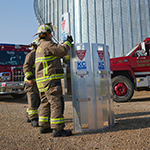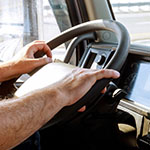Best practices for implementing a telematics-based dash camera system
Telematics-based dash camera systems can be a significant investment for any organization. However, if implemented properly, these systems can be highly effective in helping reduce accident frequency and simplifying the accident investigation process. The following best practices should be considered to gain the most benefit from your system.
Designate a system administrator
Assign an administrator to manage the system. Key administrator responsibilities include:
- Acting as a point person for all interactions with the vendor
- Ensuring all devices are installed and functional
- Assisting with setup of the portal (adding drivers, adding vehicles, setting up teams, etc.)
- Ensuring all managers are registered in the portal and have downloaded the management app (if applicable)
- Overseeing training of managers and drivers
- Ensuring managers are utilizing the system and addressing driver issues
- Collecting and preserving system-generated evidence related to accidents
Develop dash camera policies
Policies should be developed to guide managers and drivers on topics related to the system's use. Once guidelines are created, they may be incorporated into other fleet policies or a stand-alone policy. Policies should outline the:
- Purpose and usage: Explain why the system is being used and clarify how data and video will be utilized
- Driver responsibilities: Define the specific responsibilities drivers have in relation to the system
- Manager responsibilities: Specify the responsibilities of managers regarding the system’s implementation and oversight
- Accident investigation: Describe how information from the system will be used in accident investigations
- Incident management: Detail how unsafe driving incidents and poor driver performance will be addressed and managed
Conduct management training
It is important that managers who supervise drivers have a full understanding of and support the use of dash camera systems. It is best that all managers be trained at the same time to ensure consistent use and enforcement of policies. Training topics should include:
- The dash camera policy – specifically why the system is being implemented and how data and video will be used
- How to access and utilize the portal and download the management app (if available)
- System capabilities, key features, and limitations
- Expectations for frequency of system monitoring and alert response
- What events, alerts or scores require formal action, which can include coaching, warnings, or formal disciplinary action
- What scores or events require praise (e.g., high safety scores, hard braking to prevent an accident caused by actions of the other vehicle, etc.)
- Coaching best practices
Introduce the system to drivers
Introducing a dash camera system to employees in a group meeting or conference is best. This allows for consistent communication of the reasoning behind implementing the system, answering questions, and addressing concerns. It is better that everyone listens at the same time to reduce rumors. Key topics to be covered include:
- Why dash cameras are being used
- Benefits to the organization and drivers
- Any written policies or rules related to the dash camera system
- How the system works
- What data is being collected: location, trip histories, maintenance, unsafe driving events, etc.
- How unsafe driving is defined: what constitutes speeding, hard braking, etc.
- How data will be used and its impact on safety bonuses or rewards
- Consequences of unsafe driving
- Policies regarding disconnecting the system
Demonstrating the system’s management portal during the meeting will enhance driver understanding. If the system has an associated driver app, drivers should be asked to download it during the meeting and installation assistance should be provided at that time.
Consider pilots and grace periods
A best practice is to first introduce dash cameras to a small group of supervisors who drive or to tenured drivers/driver mentors whom you feel will support the system. Questions and concerns generated from this group can form the outline for your introduction to the rest of the drivers.
These pilot drivers can also attest to the fairness of the scoring and other policies. With several weeks of data from the test, the administrator could also demonstrate the system to drivers, which enhances driver understanding and comfort level.
Another best practice is to schedule a 30-day grace period for which there are no negative consequences for a drivers’ scores, bad trips, or specific events unless the events are reckless in nature. This allows managers to fully understand the system and allows drivers to correct poor driving behavior, creating a more positive experience for the drivers.
- For the first 15 days (about 2 weeks), let the drivers know how they are doing every couple of days and provide suggestions.
- After the first 15 days (about 2 weeks), sit down with each driver to discuss their scores, providing positive feedback for satisfactory performance and encouragement to improve areas of deficiency.
- Give drivers another 15 days (about 2 weeks) to improve their scores, providing guidance along the way if needed.
Reference
“New ATRI research identifies strategies for improved driver-facing camera approval and utilization,” American Trucking Research Institute, April 2023.
You may also like:

 >
>

 >
>
 >
>